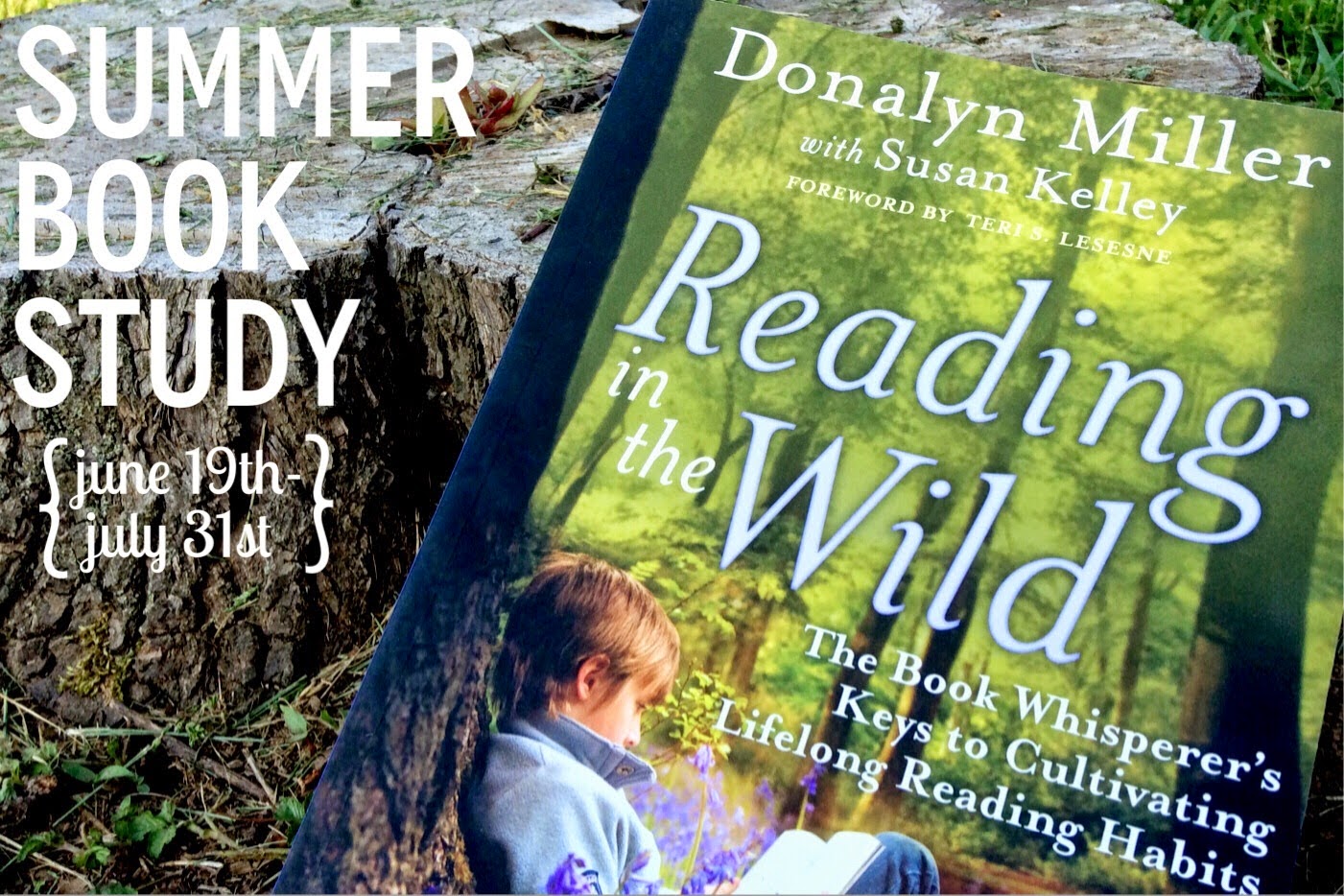One of my top reading picks this summer is Donalyn Miller's: Reading in the Wild. Have you read her other book, The Book Whisperer? If you liked it this is the perfect book for you!
I was inspired to read this book when I noticed Catherine, The Brown Bag Teacher's, book study.
Catherine's split Chapter 1 up into two weekly posts but I'm a little late to the party so I am going to combine both together so that I am all caught up.
Chapter 1 focuses on dedicating time to read. Not just in the classroom, but at home as well.
As teachers, we experience many road blocks that prevent us from our own free reading, so it is only fair to assume the same for our students. Personally, my biggest road block is a lack of time and energy. I purposefully wait for extended breaks from school, or a random snow day, to squeeze in a good book. I need to be more intentional in my search to find extra reading "moments"....while waiting at the doctor's office, riding (as a passenger) in the car, sitting on the toilet...you get the idea. The key is to remember to bring a book with you....EVERYWHERE!!!
To make this point clear, I am going to have students start storing their book bins under their desks rather than on top of the bookshelf. Students use book bins to store their books. I use to have students get up to get their book bin at the start of independent reading, and then I'd require them to put it back at the end of our 20-30 minutes of reading. However, this year I plan on having students bring their book bin to their desk immediately upon arriving in school and then keeping it with them until it is time to clean up for dismissal. That way, if students complete their work early or have a few extra moments they can squeeze in some extra reading.
I will also stress the importance of bringing a book with them to lunch, on the bus, while waiting in line to use the restroom, etc... My hope in implementing this in our classroom, will be that they will carry it over when they go home..
Alyssa, from Fourth Grade Racers, posted about using Wordle. I love making word clouds. We used ABCYA to create word clouds with key science vocabulary this year and then ironed our designs on to t-shirts. I think I may kick start independent reading with the creation of a word cloud containing a student generated list of when we can squeeze in extra reading time. This can be blown up into a poster and displayed in the classroom to refer back to or shrunk down and turned into bookmarks for each students to have as a nifty reminder.
Our district requires that students read for 20 minutes each night. We currently encourage our reading school-to-home connection with various activities...
Chapter one mentions the importance of providing students with as much time as possible to read in class, in-case they can not squeeze in enough time at home. After all, we can not control what goes on in their home life like we can in our classroom. Which brings me to my Language Arts block.
This upcoming school year our principal has created our schedule for us. We are being given 1 hour for Engage NY's ELA modules and another hour for independent reading, centers, and guided reading. Here is what my schedule might look like on a typical day:
ELA Module - This year, our school will be using Engage NY's ELA Modules. The module lessons take about 1 hour to complete and integrate science and social studies content with reading and writing. They contain high level texts, close reading activities, writing about reading, collaborative learning, and much more. They are free for anyone to use and you can check them out and download all the lessons and resources here.
Reading Block - I try my hardest to group students into 3 reading groups based on reading level and skill. My groupings change frequently throughout the year as students progress levels and change in strengths and needs. With 3 reading groups come 3 center rotations that each last about 20 minutes. Students meet with me for a guided reading lesson, they read independently and/or respond to text in writing, and complete a third center. The third center is either a word work activity, a writing activity (often the homework from that day's module lesson since our district has decided not to send it home) or RAZ Kids on the computer or Kindle. I love RAZ Kids because it provides students with choice in text, assesses their comprehension (and sends me reports), and rewards students for their efforts. RAZ Kids can also be used at home which expands the amount of on-level texts available to students outside of school.
Chapter 1 suggests that you use 1/3 of your reading block for independent reading. If you ignore the module time, we will be right on target!!!
Chapter 1 also mentions the importance of conferencing with students. I hope to integrate that somewhere into our schedule. I know most teachers are not given 2 hours for Language Arts, however, I always feel that no amount of time is ever enough.
Check out all the other posts about chapter 1 and link up with your ideas.





























